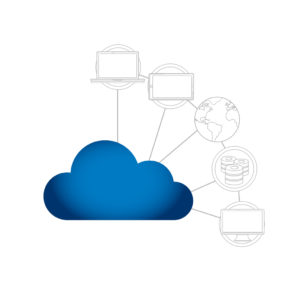The usefulness of your IT help desk isn’t just in the software you use or the skilled technicians solving problems. It’s also in how your employees approach their problems that need solutions. If you really want to increase both the efficiency and effectiveness of your IT help desk, part of that formula is helping your staff ask questions efficiently and learn to solve more common or basic problems on their own.
Here are five highly effective ways to increase the inquiry efficiency of your IT help desk.
1) Include Live Chat and Ticketed Inquiries
Traditional help desks function with ticketed inquiries. Employees send an email or use a form to submit an asynchronous request for assistance with any information they have. This works well for off-hours or long-solve solutions, but it can actually slow down the solve on quick or surface-level problems. Live chat has been found to be more effective at high-speed and interactive IT support than email or phone because it allows both parties to ask and answer questions quickly, share files, and run troubleshooting tests in real time.
2) Build a Detailed Tech FAQ – Keep it Updated
Interestingly, you can also increase help desk efficiency by eliminating a percentage of inquiries made. The answer is simple: A really helpful and well-build FAQ. FAQs have evolved well beyond a list of question-and-answers into ‘help portals’ that assist the user in finding the answers to common and easy to solve problems.
For example, you probably don’t need as many IT help desk calls about troubleshooting printers or employee emails as your help desk handles. A good FAQ as your first line of defense can help employees quickly solve any problem that is already known and has only a few simple steps to try.
3) Equip Chatbots to Answer FAQ Questions
Of course, not everyone is apt at searching a FAQ or help portal for the answers they need. Others don’t have time to explore the interface. For your rushed employees, the key to streamlining quick IT services and access to the FAQ is a simple chatbots. Programmable chatbots can be ‘loaded up’ with answers to common questions. And a common question is a FAQ by any other name.
What this means is that not only can you provide a FAQ answer portal, you can also equip a chatbot assistant to listen for ‘FAQ’-like questions and give the standard answer. This will speed up early troubleshooting immensely. A Chatbot can also direct employees to a real live IT help desk member for questions that go beyond the scope of the FAQ.
4) Provide Micro-Learning on Common IT Solutions
You can even teach your employees to handle increasingly complex-yet-common fixes through the use of micro-learning modules. These ‘just-in-time’ lessons can walk employees through how to do complex fixes that your company may deal with on a regular basis. The best part about micro-learning lessons is that you can ask your IT help desk team to create or map them based on the questions they really do get and solve the most often. From there, employees can summon the lesson and walk themselves through common solves without having to call IT again.
5) Have Employees Mark Category and Urgency
Finally, for problems that can’t be handled through FAQ best-practices or a quick live chat, you want a superb ticket sorting procedure. Your IT help desk can do their job best when they know what each ticket is about, how much time it will take, and how urgent the solution is before they start. Which means your team needs to know how to convey this information when they submit a problem.
When possible, ask employees to mark the category, severity, and urgency of every support ticket they request from your IT help desk. The more detail you encourage to be shared, the better. This gives your IT team a clear place to start when they pick up the ticket, live or asynchronously.
Providing an IT help desk to your employees is an important step in streamlining any modern business. But the help desk doesn’t have to be on your permanent staff. Take advantage of internal streamlining techniques and the logistic advantage of outsourced IT professionals. For more information about how to make your IT help desk more efficient, contact us today.



